Six Questions a Buyer Should Ask Before Making this Flooring Investment
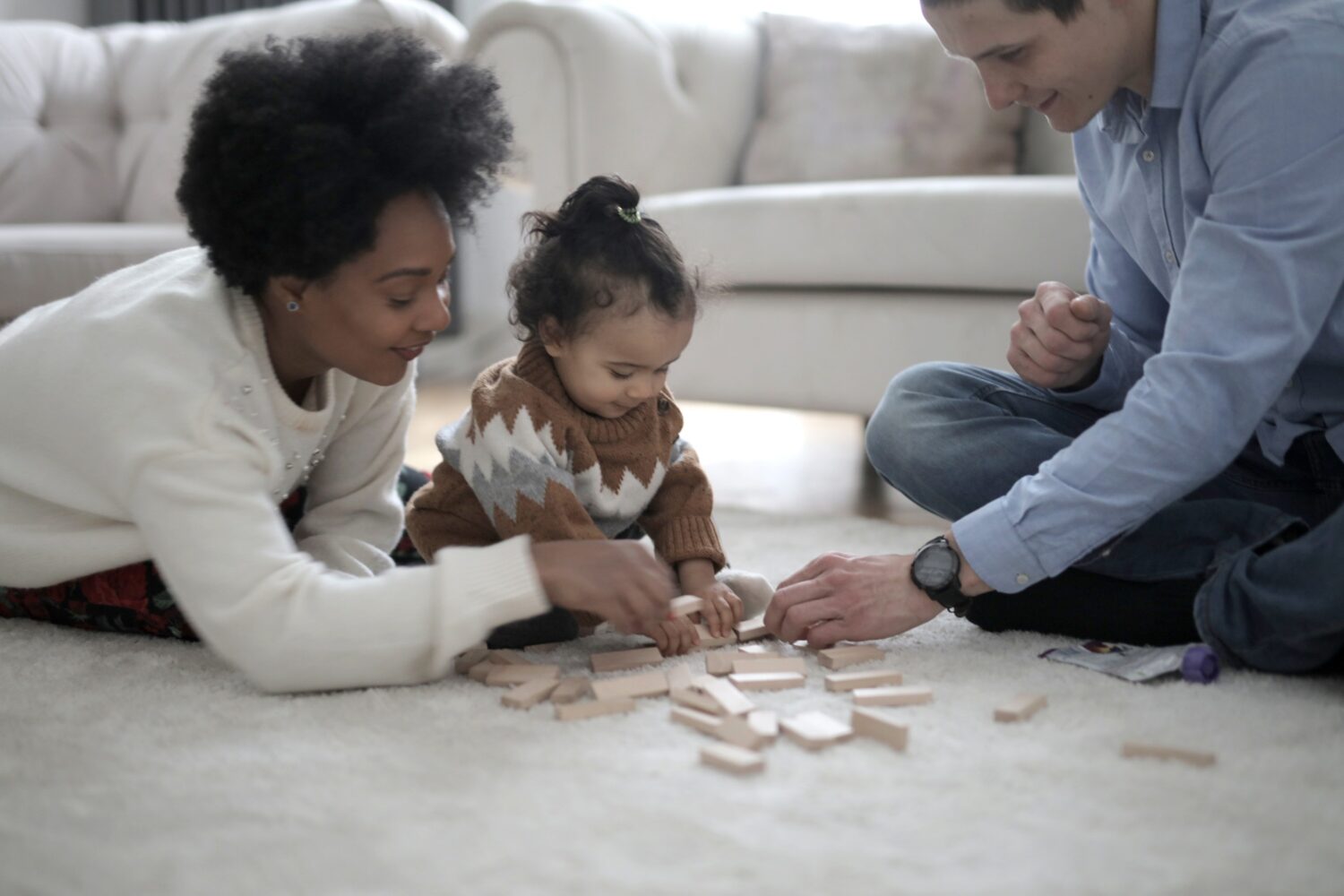
Whether you’re building your first home, upgrading your investment or just ready for a fresh look, your flooring choice is probably one of the most important decisions you can make for your home. Have you considered carpet? Everything old is new again and carpet is enjoying a resurgence in the home flooring industry. Buyers are finding that this hardy floor covering meets their needs in terms of budget, lifestyle and aesthetic. But the choice of carpet over other flooring options is only the first of many decisions you will need to make. Ultimately, there are several things to consider when choosing the best carpet for your home.
Shopping for carpet means looking at up-front cost, maintenance needs, comfort, livability and appearance. Perhaps most importantly, buyers want a floor that will last many years to come. So how do you know what is the best carpet for your home? What features should you be looking for? What is worth paying extra for? And what do you need to know before you walk through that carpet retailer’s door? Choosing carpets for your home can be daunting, but we’ve narrowed the process down to just six key questions you should ask when making this important decision.
What is the Best Carpet for my Budget?
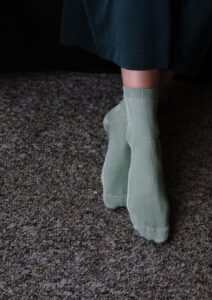
There are many factors that determine the price of carpet. The fiber type and thickness will determine how soft and durable the carpet is. Luxury carpets can be more expensive due to their high-end design and luxurious materials. Padding is also important because it makes the carpet more comfortable, absorbs sound and contributes to longevity. Finally, installation adds to the cost because it includes material, labor and transportation. When it comes to staying within your budget, you are going to have to take into account three things. Begin with the size of your job then explore the quality markers for carpet that fit your pocketbook. Lastly, consider any additional charges having to do with installation services and qualiity carpet padding.
Before you start, know the square footage of the rooms you would like to have carpeted. Some buyers like to do a rough sketch of their floor plan – you don’t need to be an artist, only to be able to draw a basic square or rectangle – and write in the measurements along each wall on the sketch. The measurement process is pretty straightforward – all you need is a tape measure and a calculator. The tricky part is figuring in the standard roll width of carpet and how much material a quality installation will require. Unless you are experienced in measuring for and ordering carpet, you’ll likely want to work with a salesperson at a reputable carpet retailer. But do measure for yourself so you can have a ballpark in mind before getting a bid from the professional.
Having a total working square footage for your project is a reality check when you are considering best carpet options. There is a wide range of quality levels when it comes to the industry. Carpet quality is a combination of fiber type, pile, “face weight” and durability. More about this below. Ultimately, with a little research, you can learn more about these traits and then walk through the door of your local retailer with a wishlist, to see what product options might meet your budget needs. Additional savings may be available in terms of specials or discounts so don’t be afraid to ask. If you can time your project for a sale – like holiday-driven specials or retailer promotions, or get a discount on the installation – you may be able to afford higher quality carpet for standard carpet pricing.
Remember too that a higher up-front cost may be offset by the length of time your carpet will last. Case in point, a “saxony pile” carpet, with twisted, head-set yarns that are dense and resistent to damage, is also the most expensive category of carpet on the market. Remember to ask the salesperson about the warranty on the carpet you are considering. Manufacturers suggest regularly scheduled professional cleanings so figure that into your budget too.
Does Carpet Construction Matter?
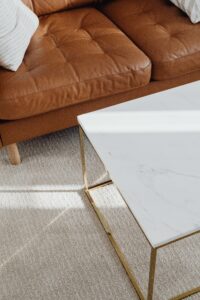
There is a lot of specialized vocabulary when it comes to carpet construction. Terms like gauge, pitch, density and “face weight” can make a buyer feel overwhelmed. Really these terms all have to do with the amount of material per square inch. When it comes to value, we’re talking about the relationship between the quality of the textile and the price. Pitch, Density and Face Weight are all interdependent characteristics. The closer the yarns, the taller the pile and the shorter the distance between tufts, the higher the weight of the carpet. The heigher the face weight, the more luxurious the feel and, in most cases, the higher the cost.
Once the yarns are spaced, the texture of the carpet is decided by the pile type. Pile is the shape and height of the tufts or yarns of your carpet. Pile is either cut or looped. Most carpet is cut pile where the yarn is trimmed to make the surface of the carpet soft. The differences between cut pile carpet types comes down to height of the tufts and the set of the yarn (twist or non-twist). Cut pile ranges in height from 3/4 inch (Saxony, Velvet, or Plush) to over an inch in options like shag. Berber is a good example of a looped carpet. A lot of commercial carpet is looped and this means the density is high but the pile height is low. And the last pile category is a mixed cut and loop weave. This blend allows for textural patterns in the carpet’s surface.
Buyers choose cut-pile carpets two to one over loop pile. The blended piles are the least in demand though trends are always shifting. Why should buyers care about the construction of carpet? The make up of the carpet influences two things. First, there is a direct connection between the construction and the foot-feel of a carpet. If a buyer wants luxury with a thick velvety feel, saxony is high-dollar and high-end. If the buyer wants a serviceable, hardy surace, berber is a great choice. Second, buyers should care about construction because of the ways pile and density effect cost.
What Fiber Type is the Best Match for my Lifestyle?
This is where your search kicks into high gear, so buckle up and grap a highlighter. There are a lot of ways that fiber type influences your best carpet option. Carpet is made of either natural or synthetic fibers and every fiber type has pros and cons. Whether you are looking for carpet that is easy to maintain, carpet that is budget-friendly, carpet that performs well in active households, carpet that is long-lasting or carpet that is plush and luxurious. Knowing these five major fiber categories will make you a better-informed buyer and help you narrow down the best carpet for your home’s needs.
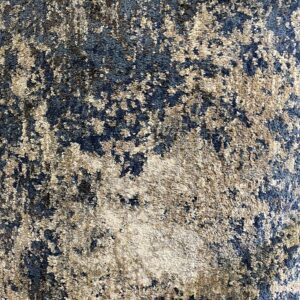
Nylon is the most popular fiber type in the residential carpet industry today. It has a reputation for being durable and relatively easy to maintain and performs the best in heavily used walkways. Nylon keeps its shape over time, even when crushed by furnishings. Additionally, nylon doesn’t absorb liquids which makes it a great carpet choice for families with small children. Nylon responds well to most professional cleaning methods. However, the standard nylon carpet can be damaged by bleaching, fading, certain chemicals and urine reactions. If pet accidents are a concern in your home, make sure you get a solution dyed 6,6 nylon for ease of clean up.
Polyester carpet is popular among customers looking for the best price and color retention. Polyester’s make up and dye qualities make its color resistant to bleaching, fading and soil damage. It has a low absorbency rate, is quick to dry and is resistant to water-based stains. On the other hand, polyester carpet is easily damaged by oily stains. Over time, polyester fibers can lose their shape and resiliency so it is unforgiving in the heaviest traffic zones of your home. A good choice for young families, polyester carpet can offer a short-term bang for the buck. Once the messiest years are past, homeowners may choose replace this carpet with one that has more longevity.
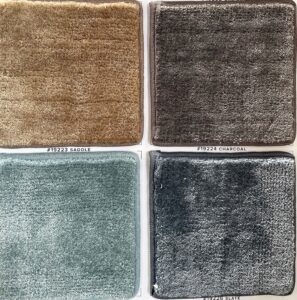
Newer to the carpet industry is the fiber Triexta. This fiber is much softer and more durable than polyester and has excellent strength and resilience which prevents the matting, fuzzing and pilling common to some polyester carpet. Triexta’s superior stain resistance makes it almost hardy against accidents involving common household foods, like red wine, colored beverages and mustard. Triexta may suit homeowners who regularly entertain in their homes or families with children. Keep in mind, though, that it is easily stained by oily substances. The durability of a triexta carpet is determined by its density and pile height.
Olefin is a very versatile carpet fiber. It is used in carpet backings, face yarns, indoor-outdoor applications and even AstroTurf. Because olefin is very moisture resistant, it absorbs almost no liquids. That makes it responsive to professional cleaning in removing water-based spots. While olefin is vulnerable to oily spills it is resistant to chemical damage, including bleach, and to color fading . Then again, olefin does not stand up well to wear and tear. Traffic areas are easily compressed, giving them a dirty, knubbly appearance. Vulnerable to friction and heat damage as well as crushing, olefin is suited to rooms with lighter use or in indoor-outdoor spaces with gentler traffic.
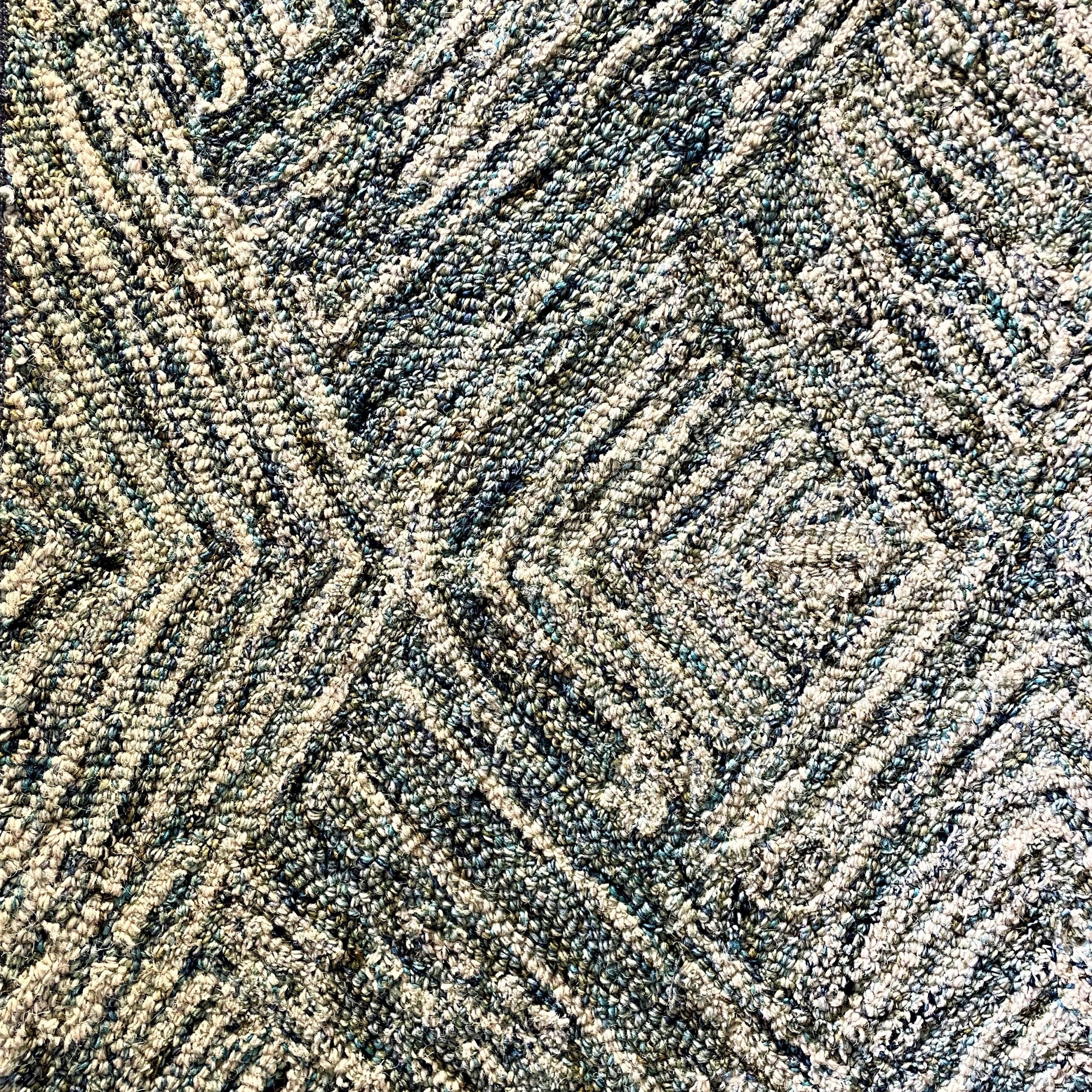
The most timeless and well-known fiber used in carpet is wool. Wool will not show soiling as much as other fibers because it doesn’t refract and reflect light like synthetics. Additionally, wool is very strong, elastic and resilient. It will stand up to the heaviest traffic and still look beautiful. Wool is an excellent insulator and responds very well to cleaning. However, there are drawbacks to this natural fiber. Wool carpet is very expensive. It is prone to distortion and fuzzing when damaged by incorrect cleaning methods or friction. Lastly, wool is easily stained by substances like wine, Kool-Aid and other acid dyestuffs which can make it a poor match to active families. Wool is easily dyed to acheive the rich colors common to oriental rugs. Investing in wool area rugs may be the best compromise for bringing this expensive textile into your home for the short term. When kids are older, this is a great long-term choice for a “forever home.”
Let us make one final point about a sixth fiber type, viscose. Viscose is rayon. It is a fiber made of wood pulp and cellulose waste by-products. These fibers go through an extremely aggressive chemical process to make viscose fibers soft and shiny. The only plus to viscose is the way it resembles real silk – but only so long as it is new and clean. As soon as a spill happens on this textile – even water – the fibers tends to ‘crisp’ and to turn brown. What is more, the rayon making process is so toxic, all rayon making in the US was halted many years ago. Instead, rug makers have gone to India to do their pollution making. If you are thinking about buying a viscose rug, or viscose furniture, learn about this fiber type first. The viscose in furnishings is not the same washable version found in clothing. And keep in mind that the industry keeps rebranding viscose, to stay ahead of bad press. It may alternately be known as art silk (i.e. artificial), bamboo silk, banana silk, manmade silk, lyocel, tencel, and faux silk. Few households are the perfect match for a viscose carpet.
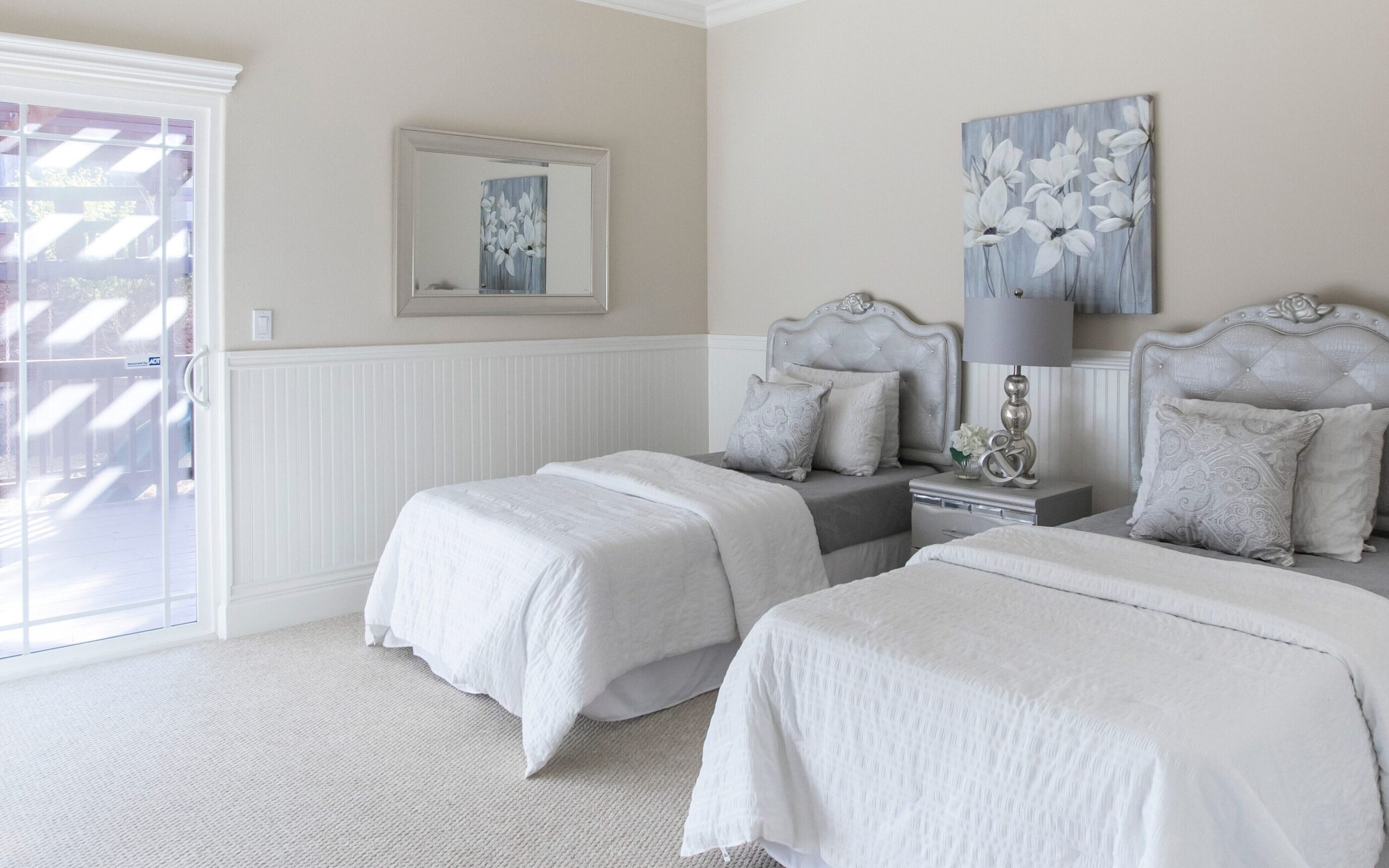
How can Carpet Serve the Specific Needs of My Home?
Let’s go back in time. About ten years ago, tile was the trending king for residential floors. Tile that looked like stone, tile that resembled wood, it was all tile all the time. But homeowners are beginning to have second thoughts. They are finding that these hard, cold surfaces aren’t always the most welcoming and effective choice. Think about climbing out of your warm bed on a cold morning. Do you want your tootsies touching down on ceramic or porcelain, or does the thought make you just want to hide under the covers? Carpet may not be the top choice for all interior spaces – particularly rooms that see a lot of spills and moisture (like baths and kitchens). But bedrooms can be a perfect setting for this cozier option. In a world full of flat screens and flat-touch surfaces, a little soft and a little smush is a nice change.
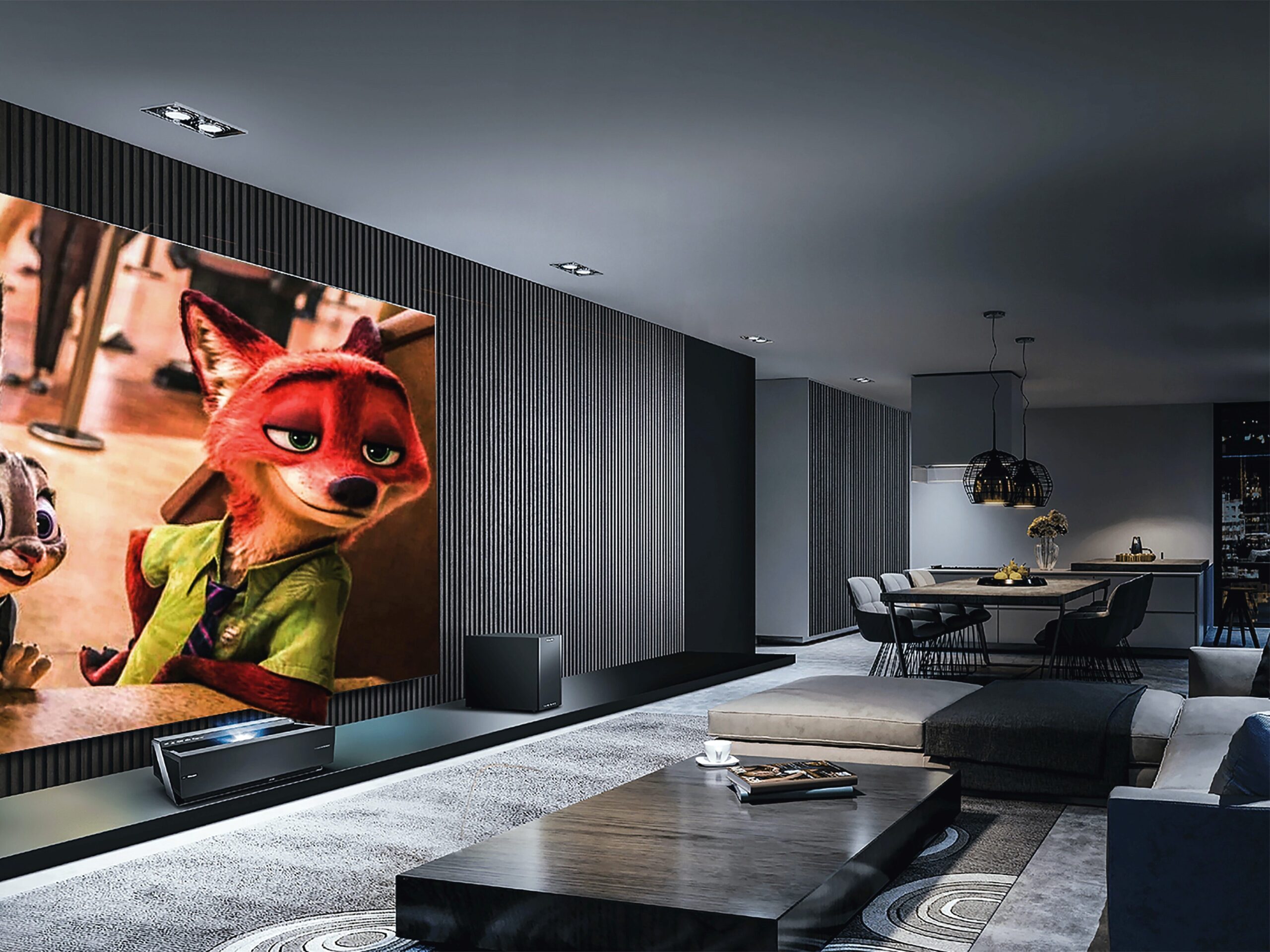
Some carpets are ideally suited for specific purposes. One of these is acoustical. For customers who have a lot of sound bounce in their homes due to wood, stone and tile surfaces, well-placed carpets can cut down on the echo chamber. Sound pollution in a home comes from verbal noise and surface noise. Carpet can moderate this pollution. It is also a great application for spaces where the noise of foot traffic might disturb people on the floor below. Take, for example, the scenario of a 1st floor bedroom under a kids’ playroom. Even more effective is the use of carpet in media rooms. This sound-absorber cuts down on the transferrence of movie soundtracks and action sequences between rooms and improves the viewing experience inside the media space. If you want carpet to help with acoustics, the best noise absorption is achieved by layering a wool carpet over a wool underlay. But if wool is too costly for your budget, cut pile carpet with a thick underlayment is far more absorbent than loop pile of any fiber type. The many benefits of using carpet include the management of background noise and clarification of speech which helps improve the overall quality of life in a home.
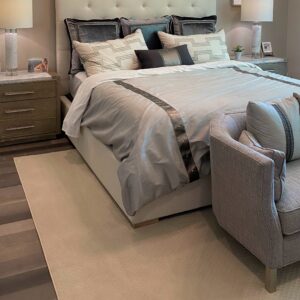
Another purpose carpet serves is as a form of insulation. Think about the fiberglass in your attic that helps keep out the coldest and hottest weather. Carpet provides that extra layer of protection from the cold of your subfloor and the drafts that creep in under your baseboards. Unlike hard surfaces, carpet does not transfer temperature extremes so it can make the HVAC system in a home more efficient. Carpet doesn’t conduct heat or cold to bare feet, giving the impression of a more bodily warmth. The plusher the carpet, the more insulation is achieved. Ultimately, floors without insulation are responsible for between 10 and 20 percent of a home’s heat loss. For homes located in regions with dramatic temperture shifts or punishing seasonal highs and lows, carpet can be a great contributor to a larger home climate management plan.
What are the Maintenance Requirements for Wall-to-wall Carpet?
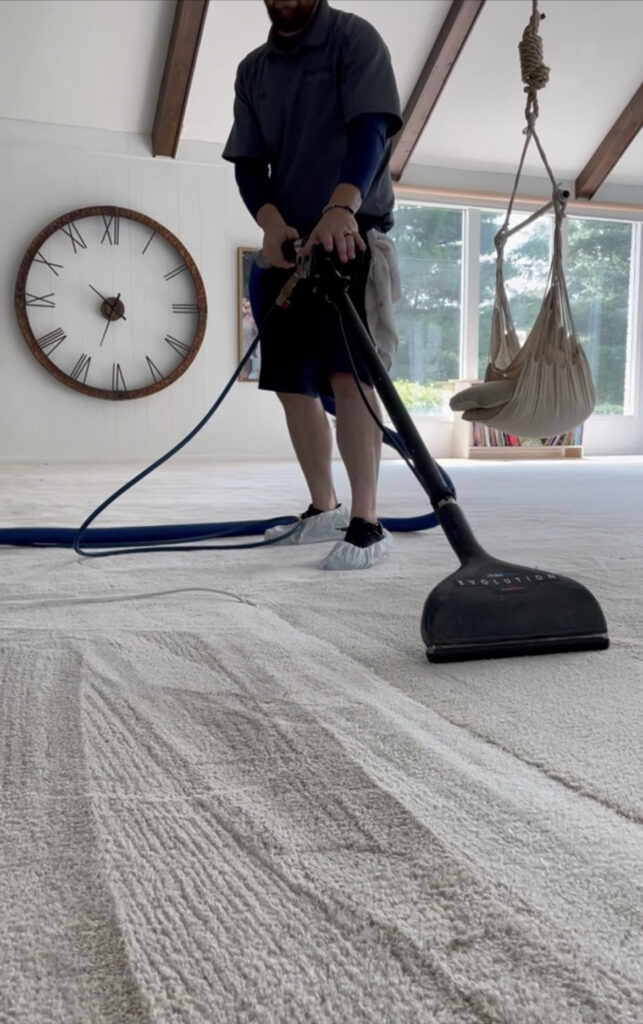
One last advantage of carpet that buyers do not often consider is the way carpet provides a filtration system for the home. When air circulates throughout a house or apartment, it carries pollutants – ash from cigarettes or candles, off-gassing from furnishings, dust, allergens, pet dander and fungus spores, to name a few. Carpet can serve as a filter to home contaminants, larger than a home HEPA filter and far more effective than a furnace filter. That can be a bad thing if the carpet is left unmaintained and pollutants are allowed to build up in the fibers. But a regularly cleaned carpet – vacuumed weekly and treated to a deep professional cleaning every 12-18 months – is a huge boon to the health of the occupants.
In fact, most carpet companies require a regularly scheduled cleaning, done by trained technicians, in order to preserve warranty protection of their product. For more information about the maintenance needs of carpet and best practices for drawing out the life of your investment, turn to a reputable, local carpet cleaning company. They will have a great list of maintenance do’s and don’ts and can also provide those warranty-preserving cleanings to be sure you enjoy your carpet for years to come.
How Should Carpet Appearance Influence My Buying Decision?
When considering the best carpet for your home, it may seem strange to save the appearance of the carpet for last. But when it comes to trends, today’s carpet comes in a broader range of styles, colors and patterns than ever before. That means you can start with important factors like cleanability, lifestyle, fiber type and construction and still be confident you will find a style, texture and color of carpet that complements your interiors.
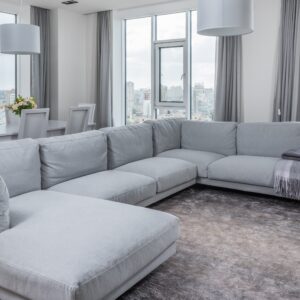
Sometimes carpet construction directly effects a carpet’s appearance. Take for example, saxony carpet. This category, one of the most popular options, comes in two styles- the straight saxony with the plush feel and formal look or the textured version with visual interest and a more casual style. If you are likely to be annoyed by the way straight saxony carpet shows every footprint and vacuum pass, a patterned or textured version might be a better choice.
When it comes to color, neutrals continue to rate high among buyers. Neutral creams, greys and beiges can tie into all upholstery and paint colors and can survive many style updates over the years. If you want a more vibrant color to complement your room’s decor scheme, keep in mind that a large expanse of saturate color can be overwhelming to the eye. That said, polyester carpet comes in the widest variety of colors. Carpet can capture a homeowner’s personality and dramatic shapes and textures are a new craze. Moreover, if you are just not ready to go wall-to-wall, you’re not alone. One of the hottest carpet trends is to choose a textured or patterned look and have it cut and bound into a custom area rug that still provides many of the advantages of whole-room installations.
You are Ready to Find the Best Carpet for Your Home!
Buyers want to feel empowered to find the right flooring for their homes. We hope this list of questions helps you better understand the different factors that can influence your carpet search. Before setting foot in a retail brick-and-mortar, the best thing you can do is to prepare as much information as possible . The internet can be a great source of information, but it’s best not to take everything at face value. A lot of content comes from biased sources so ask friends about their own carpet-shopping experiences. It’s a good idea too to source sites that are buying-neutral, like professional carpet cleaners rather than retailer sponsored articles.

TWhen it comes to carpet, there’s no one-size-fits-all solution; it depends entirely on what you want out of a flooring – what best fits your lifestyle, your maintenance preferences, your style and how much money you want to spend. Don’t be afraid to ask the experts in-person. Lastly, keep in mind that there are thousands of carpets out there. With in-depth research and the help of a carpet professional, you can land the best carpet for your home. So buy with confidence and schedule that installation. The sooner you do your carpet-shopping leg work, the sooner you get to enjoy the perks of this versatile, cozy and luxurious flooring!
